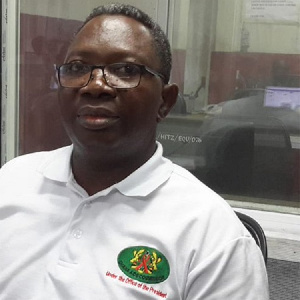Health News of Monday, 4 October 2021
Source: classfmonline.com
HIV risk very high among LGBTQI+ men in Ghana – Dr Atuahene
Men who sleep with other men have a very high HIV prevalence rate in Ghana, Director-General of the Ghana AIDS Commission, Dr Kyeremeh Atuahene has said.
Speaking in an interview with Kwame Appiah Kubi on Monday, October 4, 2021, on Accra100.5FM’s morning show Ghana Yensom, Dr Atuahene said apart from gay men, sex workers of all kinds, are also highly vulnerable.
“There are different risk levels based on sexual activity”, he pointed out, explaining: “Sex workers – both male and female – for example, have a high risk due to their sexual activities which they rely on as their livelihood”.
Also, he noted, “men who have sex with men have a high risk of contracting the virus because anal sex has a very high risk of transmitting the disease from one partner to the other compared to vaginal sex”.
As a result, Dr Atuahene said “there is high HIV prevalence among men who have sex with men”.
“In our last survey in 2017, the prevalence rate of HIV among men who have sex with men was 18.1 per cent”, he revealed.
He said older men who have sex with men constitute about 34 per cent of that prevalence rate in that category.
“Those with these risky behaviours are highly vulnerable to HIV”, Dr Atuahene told Kwame Appiah Kubi.
He explained that the high prevalence among sex workers and men who have sex with men trickles down to the larger population due to cross-sexual activity between those in the risky behaviour and those in the general population.
“Since both sex workers and men who have sex with men may have love or multiple partners in the general population, they are more likely to transmit the disease to other people who don’t partake of their risky behaviour”, he noted.
“Gay, bisexuals and transgenders have a very high prevalence rate. They form part of the key affected populations”, he said.
“So, if we are to achieve our target of 95 per cent reduction in HIV transmission, then we must be able to reduce the risk of transmission among these key affected populations, then it will help us beat down the prevalence rate among the general population”, he said.
Entertainment










